The Story of Culture and Arts
- Image resource of Korean history
- Documents from History TextBooks
- Culture & Art Stories from Korean History
- Culture & Art Stories from Korean History - Korean
- National Institute of Korean History
- History net
- About the site
- Introduce
-
Numerous topics related to Korean culture and art are mentioned in middle and high school national history textbooks, but most of them are briefly described by era, making it difficult to understand their concepts, transition processes, and characteristics.
<Culture & Art Stories from Korean History> produces and provides video materials based on expert commentary on the flow, change process, characteristics and characteristics of each major topic in the field of culture and art in Korean history.

Scenario
Paintings that capture the life the people of Joseon dreamed of having, Pyeongsaengdo. In one of 10 panels, we see a wedding. A pair of ducks, symbols of a contented marriage And a gentleman walking, holding a wild goose wrapped in cloth. We see four men holding lanterns. It appears a wedding will be held this evening. The groom, wearing a square black hat, rides a white horse. But did you notice something? It is not the bride going to the groom’s home for the wedding, but the groom going to the bride’s! What is this about?
Marriage Protocols
We have long considered weddings to be the biggest event in a person’s life.
“While the wedding ceremony itself is important, it is also a major rite of passage in life and marks a transition in one’s life and family.” Kim Yeonsu / Research Professor, AKS (Academy of Korean Studies)
As part of the process of creating traditions different from those of the preceding Goryeo Dynasty, the new Joseon kingdom instituted wedding protocols and promoted them across the country.
“The Joseon court attempted to implement wedding protocols based on a Zhou Dynasty ceremony documented in Zhu Xi’s works on domestic protocols and rituals. This style was reportedly male-centric and patriarchal.” Kim Yeonsu / Research Professor, AKS
The ceremony consisted of four major stages. The uihon, in which both families gather to discuss the wedding, the napchae, when the wedding is agreed upon and formal greetings occur, the nabpye, when the groom brings wedding presents to the bride’s home, and chinyeong, in which the groom fetches his bride and the ceremony is held. However, this form of chinyeong failed to establish itself in the Joseon kingdom.
Joseon Dynasty Wedding Customs
A groom heading toward his bride’s home for the wedding ceremony was long a common sight.
“Even at the end of the Joseon Dynasty in the 19th century, weddings were usually held at the bride’s home.” Kim Yeonsu / Research Professor, AKS
The time where the bride finally moves out of her home and into her in-laws was called “ugwi”.
“The period from the wedding until ugwi varied, from a few months to a few years.” Kim Yeonsu / Research Professor, AKS
The married couple lived at their respective family homes until ugwi, with the groom making regular visits to the bride’s home. Similar accounts are found in diaries from the sixteenth century as well as from the late Joseon period. A married woman going to visit her parents, an act called “geunchin”, was more common than you might think. It was the same even in the late Joseon period.
“People today commonly think that in Joseon times, a married woman was confined to the inner quarters of her husband’s home and lost any right to visit her own family. However, geunchin in the Joseon Dynasty was a common practice. Women went for all sorts of reasons: holidays, a parent’s birthday, births, treatment, rest, or simply at the parents’ request.” Kim Yeonsu / Research Professor, AKS
Chae Jegong, a Confucian scholar and minister in the eighteenth century, wrote a eulogy for his deceased sister, from which we can infer that she had lived at her parental home despite being married.
‘When you would go off to your in-laws for a few days, the whole house fell silent and the sound of laughter ceased. Our old parents were at a loss as to how to spend their time. I too was miserable and always pressed you to return home quickly.’ - Chae Jegong, "Eulogy dedicated to his deceased sister," in Works of Beonam
We can also confirm cases of geunchin from the famous Joseon woman painter and writer Sin Saimdang (1504-1551).
‘I leave my old mother in my hometown and carry this heavy heart with me to Seoul. When I lift my head now and then to gaze upon the northern fields, all I see are the blue evening mountains below the white clouds.’ - "From Daegwallyeong Pass," in Daedongsiseon (Collection of Works by the Great Poets of Korea), Vol. 12
This poem, which describes the writer’s heavy heart upon leaving her mother alone, was written upon Sin Saimdang’s first trip to her in-laws after nearly twenty years of marriage. Why then could married women in Joseon high society frequent their parental homes?
“First, it could have to do with the closed marriage network in Joseon. It was different from ancient China where married women moved far away to live with their in-laws.” Kim Yeonsu / Research Professor, AKS
Joseon women often married someone from the same village or county as them, so going home to visit family wasn’t very difficult. Second, Joseon marriages were not between individuals but families. This gave the bride more personal autonomy to see her family whenever she wished.
Modern Wedding Customs
After Korea opened up in the 19th century, society was transformed, and traditional wedding culture also experienced dramatic changes.
“With the abolition of the caste system during the Gabo Reform of 1894, and with widows now allowed to remarry, the former marriages between families of the Joseon era became marriages between individuals.” Kim Yeonsu / Research Professor, AKS
Individual-based marriages weakened the idea of the clan and made it harder for women to defend the maintenance of individual lives.
“From the beginning of the 20th century, one begins to hear about this in songs about women’s hard life at their in-laws.” Kim Yeonsu / Research Professor, AKS
Not only did married life change, but the location, dress code, and customs of weddings also changed with the times.
“One change was the introduction of the new Western idea of a Sunday 10 a.m. at a public hall wearing a tuxedo and wedding dress, the precursor to the modern wedding ceremony. A new wedding paradigm emerged.” Kim Yeonsu / Research Professor, AKS
Demand for this new wedding ceremony grew in the 1930s. New businesses began popping up: wedding halls and wedding item rental shops. These new wedding halls spread during the 1950s before and after the Korean War, targeting those who had nowhere suitable for their marriage ceremony. From then until the 1980s, the number of such venues exploded. With the commercialization of rituals and the desire to imitate Western culture, traditional Joseon wedding customs merged with the newly appeared wedding hall. Modern Korean weddings that feature a modern ceremony and a traditional pyebaek ceremony all under one roof are the child of this union.
Epilogue
From a ceremony held at the bride’s house to a wedding hall, a black belt and hat to a tuxedo, from the bride’s ceremonial dress and headpiece to a white gown and veil. Our understanding of the word “marriage” and the way a marriage ceremony is held continues to change over time. Despite all the changes in ritual and attire over the years, the values found in a traditional wedding, such as the promise to love, cherish, and honor one another in both good times and bad, live on unchanged.
Life & Folklore
17 films-
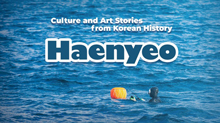 Haenyeo, female divers in Jeju08:52
Haenyeo, female divers in Jeju08:52 -
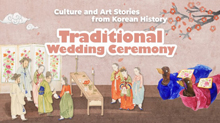 Traditional Wedding Ceremony08:22
Traditional Wedding Ceremony08:22 -
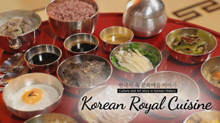 Korean Royal Cuisine08:22
Korean Royal Cuisine08:22 -
 Gat and Traditional Headwear of Korea08:48
Gat and Traditional Headwear of Korea08:48 -
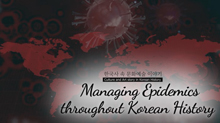 Managing Epidemics throughout Korean History08:48
Managing Epidemics throughout Korean History08:48 -
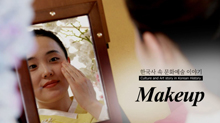 Makeup07:52
Makeup07:52 -
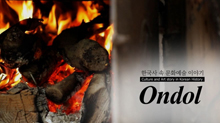 Ondol, Korea's Underfloor Heating System08:40
Ondol, Korea's Underfloor Heating System08:40 -
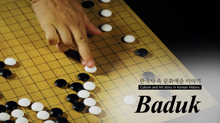 Baduk08:32
Baduk08:32 -
 Four Treasures of the Study09:34
Four Treasures of the Study09:34 -
 Farming Implements09:12
Farming Implements09:12 -
 Coming-of-Age Ceremony08:41
Coming-of-Age Ceremony08:41 -
 Ginseng08:44
Ginseng08:44 -
 Tobacco08:27
Tobacco08:27 -
 Kimchi08:37
Kimchi08:37 -
 Relief Crops08:37
Relief Crops08:37 -
 Korean Currency09:28
Korean Currency09:28 -
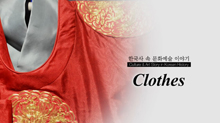 Clothes08:20
Clothes08:20

